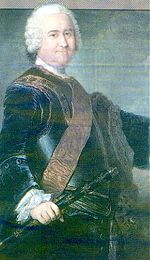Pict Clanns of Albann

Clann KEITH

Although several references claim the Keiths are of Norman ancestry, the Lord Lyon king of Arms, Sir Thomas Innes of Learney, the supreme authority on such matters, and the man with all the national resources to know, stated in his book 'The tartans and families of Scotland', published in 1958, "Amongst the most romantic names in Scottish history, is that of Keith, Marishal of Scotland, and a Celtic ancestry is claimed for this race."
The first authentic ancestor was Hervey Keith, who held the office of Marischal under Malcom IV. His descendant succeeded to the office of Marischal in 1294, was imprisoned by the English until 1304, and in 1305, was one of King Edward's four Deputy Wardens of Scotland, but at Christmas of 1308 he joined the cause of Robert the Bruce, and was rewarded with a grant of the Royal forest of Kintore when Bruce became ruler.
The Keiths were superb horsemen, and they were responsible for supplying and training the war horses for the Scottish army. As the English had huge Clydesdale type horses, the Scots had mere ponies inherited from the Picts. The large English horses were impressive but they required high maintenance, and were unreliable in close combat. The Scottish ponies were tough, reliable and economical.
As
Commander of the Scots cavalry at Bannockburn, Keith's attack annihilated
the English army. He was rewarded handsomely with many of the
forfeited Comyn estates in Buchan. He co-signed the letter to the Pope in
1459 declaring Scottish independence from the English. His great-grandson,
Sir William Keith, founded the tower of Dunottar Castle. Sir William's
son, Sir Robert, was elevated to the peerage as Lord Keith.
Sir Robert's son, William, 2nd Lord, was created Earl Marischal in 1458. His son, William, 2nd Earl, fought at Flodden. The 3rd Earl, 'William of the Tower' a distinguished statesman, lived in seclusion at Dunottar much of his life. His grandson, George, 4th Earl, was Ambassador Extraordinary to Denmark, in 1593, he founded Marischal College in Aberdeen. William, 5th Earl, was created Admiral of Scotland. He appeared as Marischal at the coronation of Charles I.
William, 6th Earl, was a Covenanter, but in 1651, he rescued the Regalia and carried it to Dunottar. His brother, 7th Earl, was a Royalist whose grandson, George, 9th Earl, and the last Earl Marischal, joined the Earl of Mar in 1715, and with his celebrated brother, Field Marshal James Keith, retired to the continent where his exploits rendered the name of Keith famous throughout the world. The Earl became Frederick the Great's closest friend, and the Field Marshal became his greatest General. Field Marshall Keith fought for both Russia and Prussia, and became Governor of the Ukraine and Finland under Czar Peter II, and fell at Hochkirsch in 1758. He was another brilliant Scottish Jacobite refugee soldier who made his mark on the world stage. For more information on him, check here.
Upon Earl George's death in 1778, the chiefship passed to Keith of Ravelston, who acted as Knight Marischal to King George IV. On the death of William, 4th Earl, the Chiefship passed to the grandson of his sister, Lady Catherine Keith; Antony Adrian, 5th Earl and 8th Lord Falconer of Halkerton. Arthur George Keith, 10th Earl of Kintore, now Chief of the Clan Keith, has his seat at Keith Hall in Aberdeenshire.
The bloodiest of the Scottish inter-clan feuds:
Lachlan Gunn of Braemor had an only daughter, Helen, who was famous for her beauty, and the day of her marriage to her cousin, Alexander, was fixed; but Dugald Keith of Ackergill, whose advances she had spurned, surrounded her father's house with a body of armed Keiths. They slew many of the Gunns, who were unprepared for an attack, and carried off the girl to Ackergill, where she was raped and, eventually threw herself from the tower.
This was the spark that ignited a bloody feud that lasted for many years.
Raid upon raid followed, back and forth between the Keiths and the Gunns, and in 1426, a vicious battle was fought at Harpsdale. That conflict was indecisive. In 1464, the chief of Clan Gunn, George 'Crowner' Gunn, became weary of the feud, and called for a meeting with the Keiths. The chief of the Keiths agreed to meet, and settle it amicably with twelve men each.
The Keiths showed up with twenty-four men - two to a horse, and attacked the Gunns; the Gunns fought desperately but were all cut down. George Gunn was killed, and stripped entirely, and left for his clansmen to find.
Soon after, William MacKames, a kinsman of the Gunns, killed George Keith, his son, and ten more of his men at Drummoy.
And so it went.